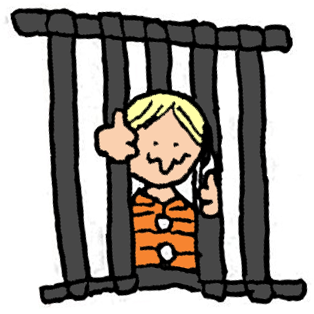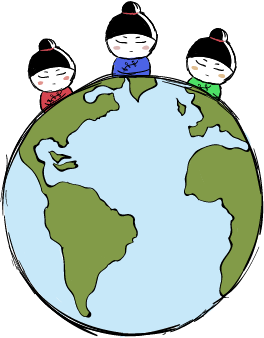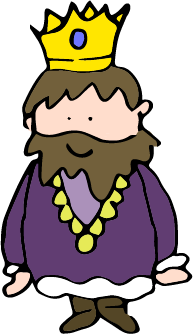 Colour Psychology
Colour Psychology
How people respond to colour is of great interest to those who workin marketing. Colour psychology research is often focused on how the colour of a logo or a product will yield higher sales, and what colour preferences can be found in certain age groups and cultures.The study of the psychological effects of colour have coincided with colour theory in general. Goethe focused on the experience ofcolour in his Zur farbenlehre from 1810.In opposition to Sir Isaac Newton’s rational approach. Goethe and Schiller coupled colours to character traits: red for beautiful, yellow for good, green for useful, and blue for common. Gestalt psychology in the early 1900s also attributed universal emotions to colours, a theory that was taught to students at the Bauhaus by Wassily Kandinsky.

Goethe

Schiller
GOETHE AND SCHILLER COUPLED COLOURS TO CHARACTERS TRAITS: RED FOR BEAUTIFUL, YELLOW FOR GOOD, GREEN FOR USEFUL, AND BLUE FOR COMMON.
The best known colour psychology test was conducted by MaxLüscher in the 1940s, when he tested the responses of people to aseries of coloured cards. A psychologist could interpret the person’s character based on the test results. The interpretation of this research in colour psychology is disputed, since it is not clear whether people respond to the colours or the cultural concept of the colour. It is more likely that the cultural context, our upbringing, and personal preferences influence our interpretation of colour more than anything else. Some colour psychology findings have been proven to work.‘Cooler’ colours can have a calming influence on people, which is why hospitals and prison walls are often painted in a soft greenish colour. Another research shows that the colour of placebo pills influences their effectiveness. Blue coloured pills work better as depressants, and red colour pills better as stimulants.



THE CULTURAL MEANING OF COLOURS IS NOT SET BUT ALWAYS CHANGING.
Research shows that ninety-eight languages have words for the same eleven basic colours; however, the meaning a colour may have can be very different. There are conflicting theories on whether the cultural meanings of colours can be categorized. Meanings can change overtime and depend on the context. Black may be the colour of mourning many countries, though a black book cover or a black poster is not always associated with death. Another example is that brides in China traditionally wear red, but many brides have started to wear white in recent decades.The next few pages list some of the meanings of colours in different cultures.

Was the colour of mourning during the Roman empire, and in Juda is mand Christianity it is associated with death and evil. During theMiddle Ages, black clothing became popular, and during the Renaissance it was worn by the wealthy and nobility in all parts of Europe.In the nineteenth century, the black army was the nickname of the Russian anarchists. In the twentieth century, black became the colour of Italian and German fascism, who were called blackshirts. In Shia Islam black is a very devout colour. The black standard is one of the flags of Muhammad in Islam. The black standard has been appropriated as a symbol by jihadism since the late 1990s.

Is the colour of death and mourning in China, Vietnam, and Korea. InIndia, people wear white after the death of a family member. Jewish,Christian and Hindu religions use the colour white in rituals to indicate purity, chastity, virginity, and peace. White is the traditional colourof bridal dresses in Western cultures. In Europe, white was historically associated with absolute monarchy. It became synonymous in the twentieth century with anti-communist and counter-revolutionary movements in Russia. A white dove is an international sign of peace, and a white flag is the international sign of surrender.

CComes from the Sanskrit word for blood. In Greek mythology it was the colour for the planet Mars and the god of war. Red is the most important colour in China and means good luck and happiness. Red promotes long life, and it is used in Chinese new year celebrations.Red is the traditional colour for brides in India and Nepal. In Japan, a red kimono symbolises happiness and good luck. In Japan’s Shinto religion, red is the symbol of life. The Russian word for red has the same root in Old Russian as the word ‘beautiful’. The oldest symbol of socialism is the red flag, and red is still associated with socialist and communist parties. The red shirts, or the red movement, was the name of those who opposed the 2006 military coup in Thailand.

Is the colour of nature in many cultures. Early rituals centred on the hope of a good harvest with green vegetables. Green is the traditional colour of Islam, the colour of the prophet Muhammed, which is why many flags in the Islamic world use the colour green. Since the 1980s, greenhas become the colour of environmental parties and organisations. Green parties in Europe have programmes based on ecology and environment. The word greenwashing is used to describe the advertising of companies that use positive environmental practices to cover up environmentally unfriendly activities. A ‘green room’ is used in television and theatre to quiet nervous performers.

Is the most visible colour from a distance, so it is often used for objects that need high visibility, such as ambulances, road maintenance equipment, and taxis. In East Asia, yellow is considered sacred and imperial. In China it is the colour for royalty, and during the QingDynasty, only members of the imperial household were permitted to wear yellow. In China it is still seen as the colour of happiness, glory, wisdom, harmony, and culture. Yellow is used to symbolise gold as one of the colours of the Catholic church and the Vatican. Yellow in Italian is giallo and a nickname for crime stories. The demonstrations in the Philippines in 1986 were also known as the yellow revolution.

Was the the most expensive dye in Roman times, and was worn byRoman magistrates, Byzantine emperors, and the rulers of the HolyRoman Empire. During the reign of Elizabeth I, only royalty was allowed to wear purple in England. Roman Catholic bishops stillwear purple as a colour of royalty. In Japan, the colour is traditionally associated with the emperor and aristocracy. In Thailand, widows in mourning wear purple. In Western politics the colour purple is neutral, and used for a coalition between a left-wing and a right-wing party. The Women’s Suffrage movement used purple, and the colour was adopted in the 1970s by the women’s liberation movement. Purple and pink are both associated with the LGBT community.

Is tested as the colour that is best liked by all cultures, which is how it became the colour for international business. The United Nations chose blue as a colour in 1946, but the colour has no special significance. Blue washing is a term for companies that join the UnitedNations ‘Global Impact Initiative’ only for PR reasons. ‘Blue collar worker’ refers to the shirts worn by people working manual labour jobs. The Tuareg of North Africa wear blue turbans, dyed with indigo. Azure blue is the national colour of Italy, the national soccer team is called the Azzurri. Several languages, like Japanese, Thai, Korean, and Lakota Sioux, use the same word to describe blue and green.

Comes from the Sanskrit word for orange tree. In Asia it is known assaffron, named after the spice. In Hinduism, the divinity Krishna is portrayed dressed in saffron. In Buddhism, saffron is the colour of illumination, the highest state of perfection, and the colour of robesworn by monks. Orange ribbons are used to promote awareness and prevention of self-injury. In Northern Ireland the protestant order is called the Orangemen, who wear orange during annual marches. Orange is the colour of the Dutch monarchy, and in South Africa, orange was the colour of the ruling party during Apartheid. Prisoners are often dressed in orange to make them distinctive in case of escape.
The flag has been the most prominent symbol of national identity since the nineteenth century. A new national flag often marks a revolutionary a political change. Flags have a military origin, and were used to identify military units from one another in the Roman legions.Different national flags often use similar colours, sometimeseven with the same meaning. Thirty-eight percent of the world’s national flags use red as a colour, which symbolises the blood spilt for independence, or on the battlefield. One of the most used colour combinations is red, white, and blue (Chile, Panama, Russia, Samoa,United Kingdom, Thailand, etc.) where blue often symbolises the domination over sky or sea.
38% OF THE WORLD'S NATIONAL FLAGS USE RED AS A COLOUR, WHICH SYMBOLISES THE BLOOD SPILT FOR INDEPENDANCE, OR ON THE BATTLEFIELD. ONE COLOUR, WHICH SYMBOLISES THE BLOOD SPILT FOR INDEPENDANCE, OR ON THE BATTLEFIELD.
Many African countries use red, black, and green in their flags. This stems from the Pan-African flag from 1920. The red symbolises the blood spilled for liberation, black is for the African people, and green for the continent’s natural wealth. There have been a few monochrome flags. Morocco had a deep red flag for over two hundred years. Afghanistan had an all black flag at the end of the nineteenth century. And during the reign of the Taliban in 1996, Afghanistan had an all white flag. The last remaining monochrome flag in the world was the Libyan flag, a plain green field without markings or insignia. The green flag was a personal choice of Muammar Gaddafi whose manifesto was called the ‘Green Book’. Artist Yuri Veerman collected the different digital versions of the Libyan flag that were discussed on the English Wikipedia page, ‘Flag of Libya’. Between 2005 and 2011 the chromatic representation of Libya was revised fifteen times, each with different shade of green. After a six-year fight over the right shade of ‘Gadaffi green’, a fifteenth revision was made, marking the fall of the Libyan regime and the last monochrome flag.